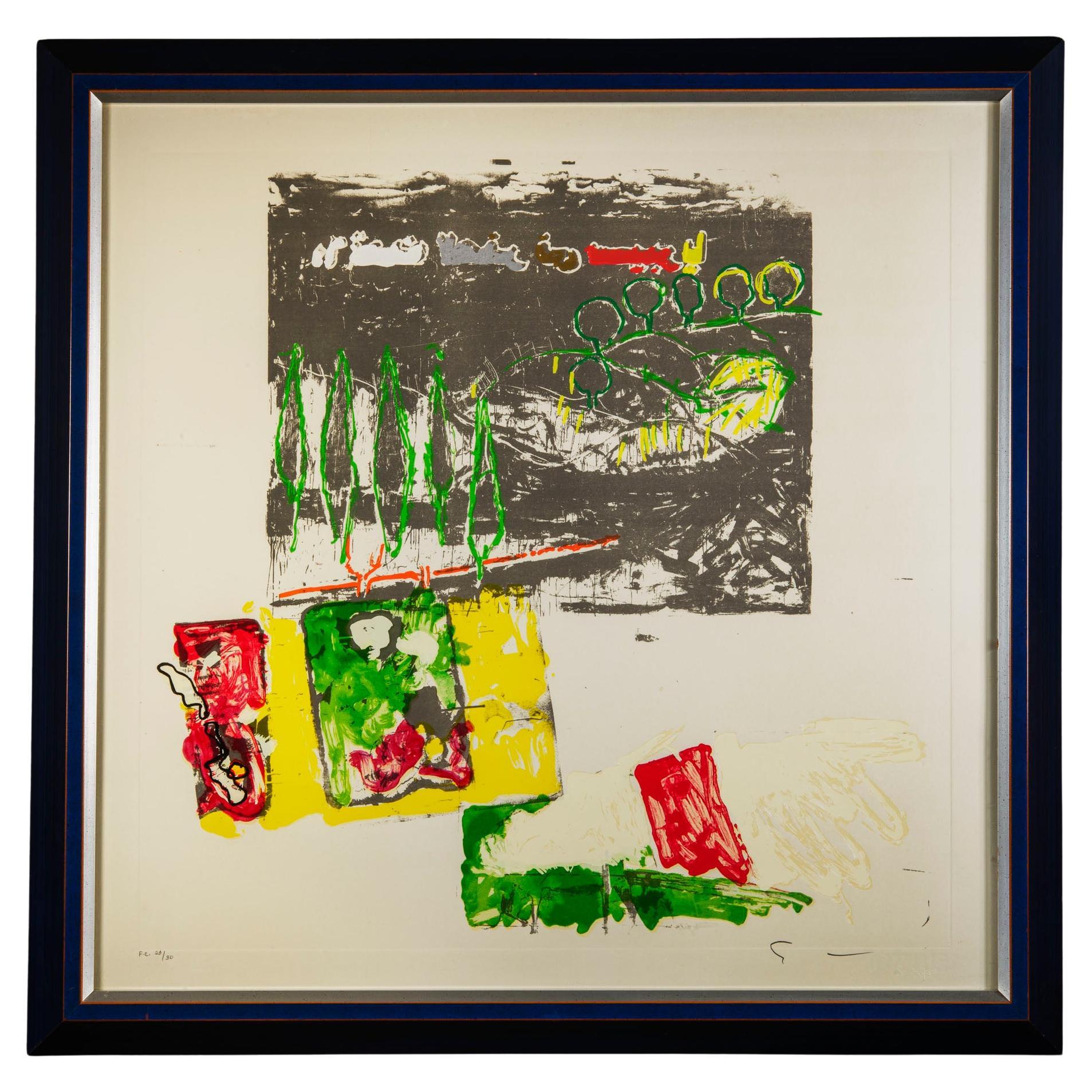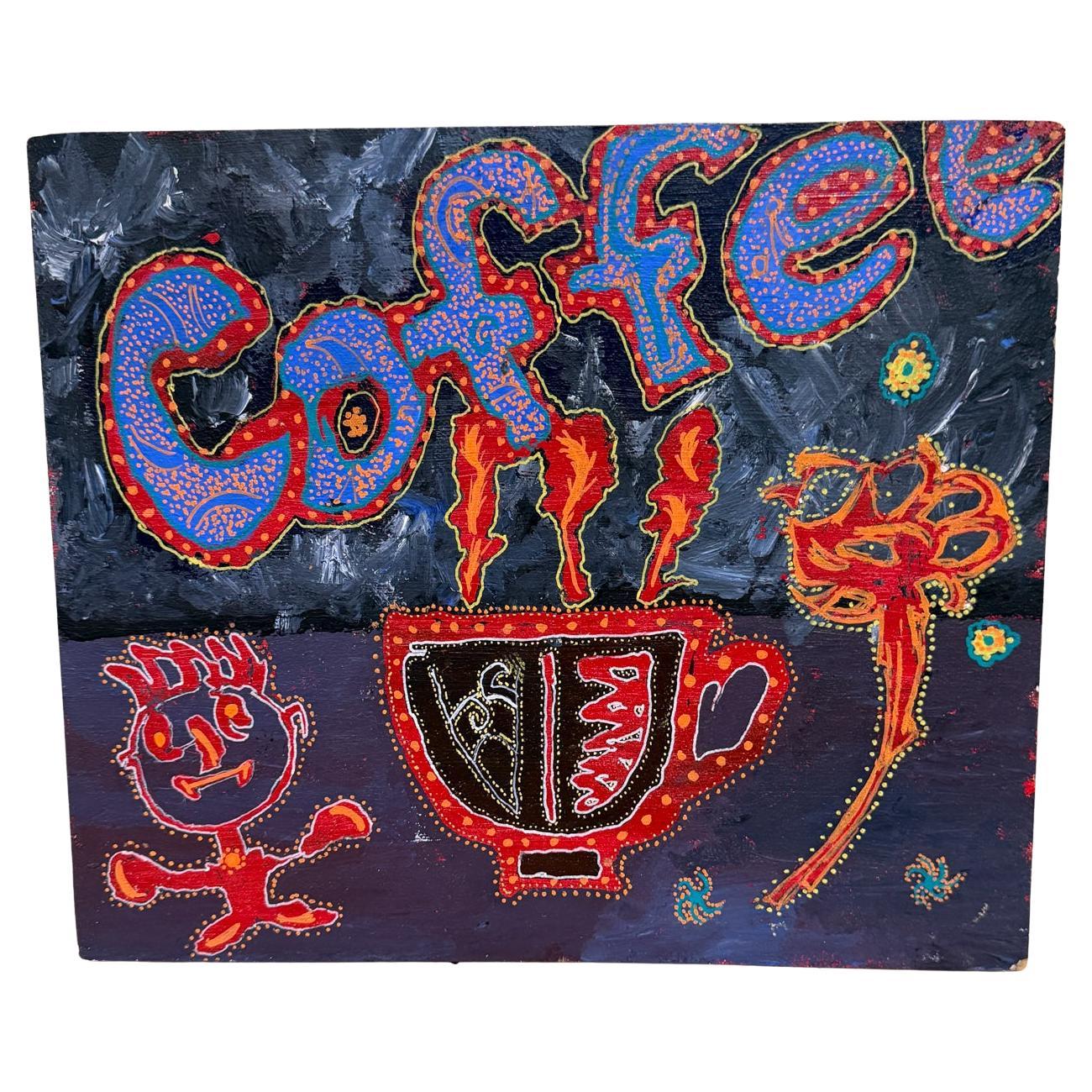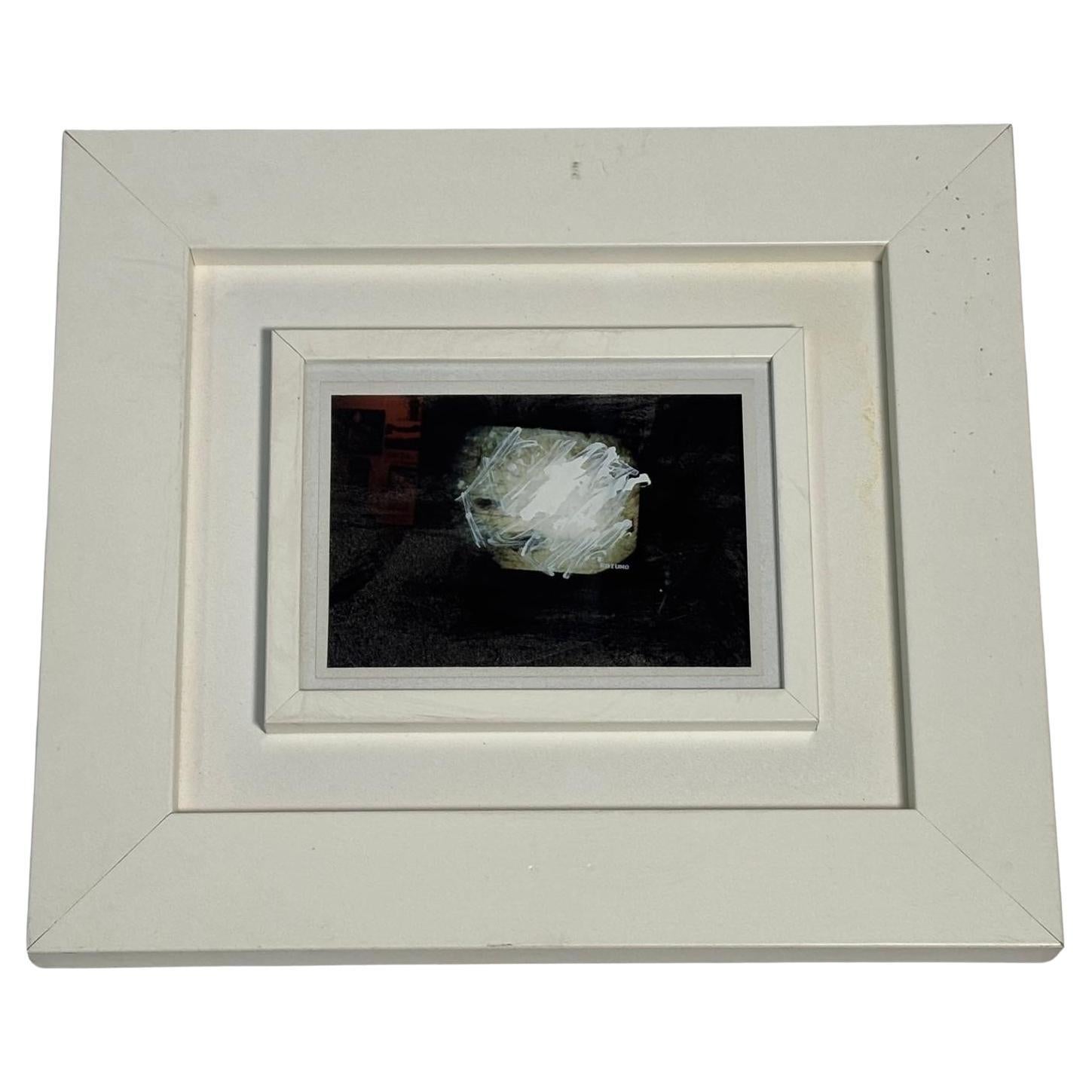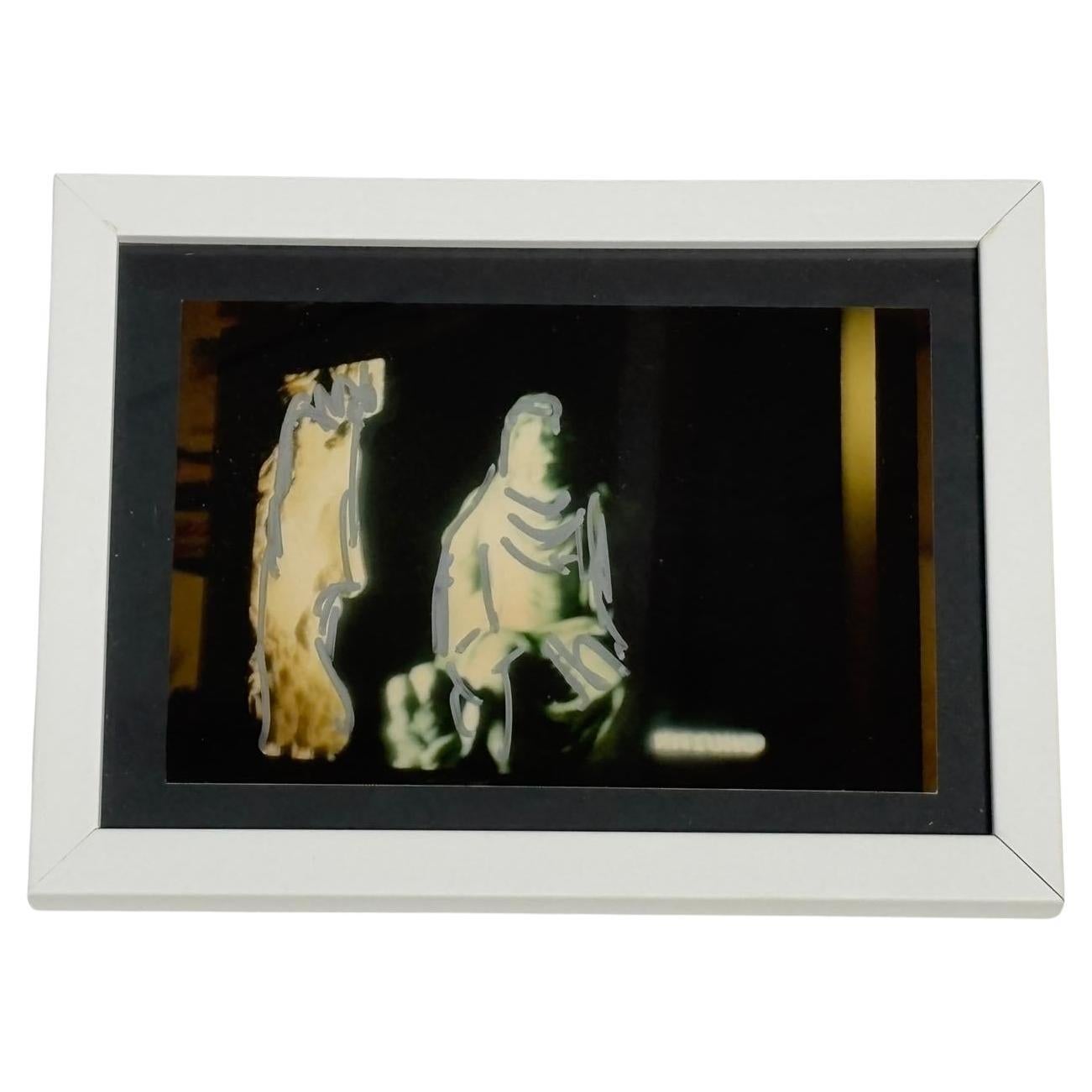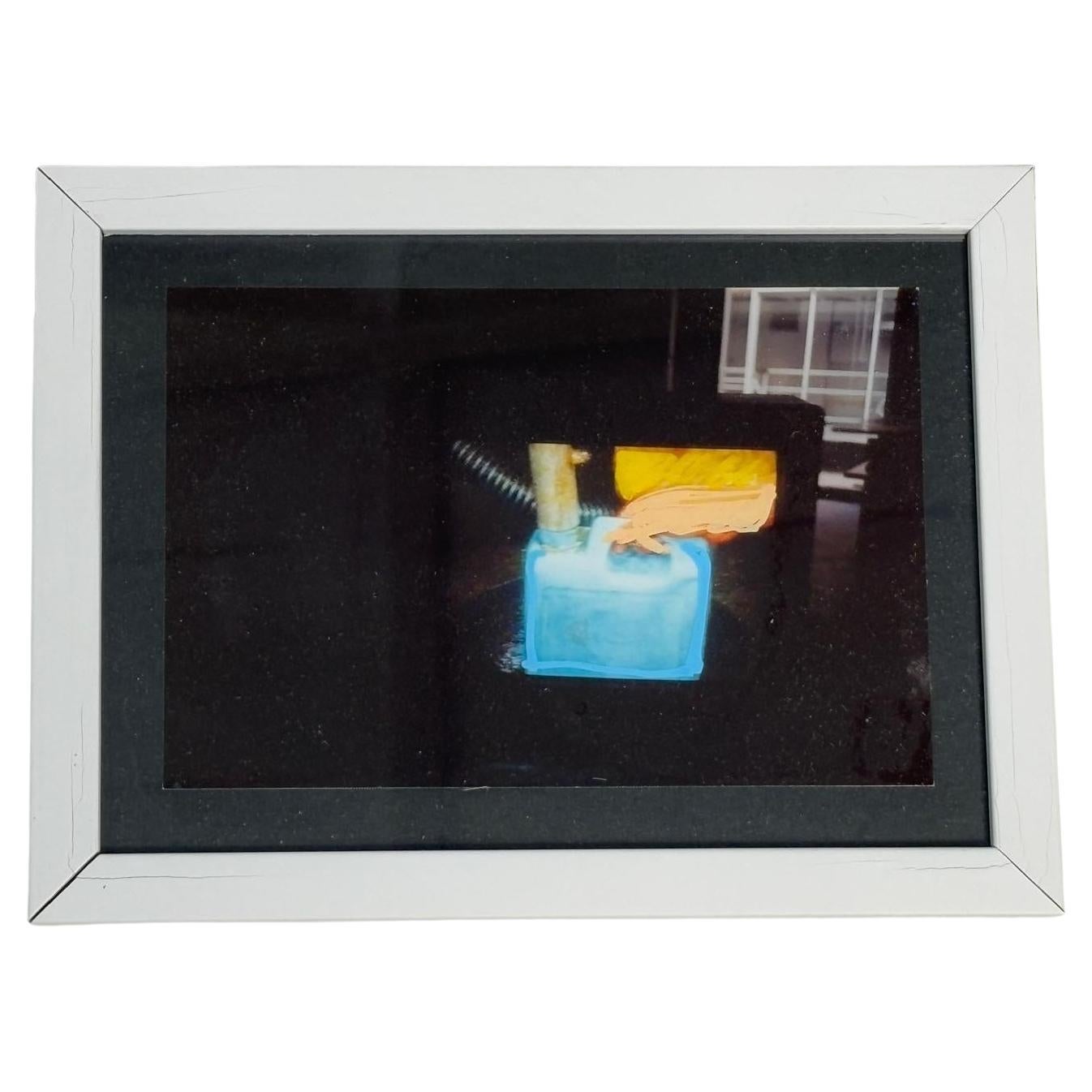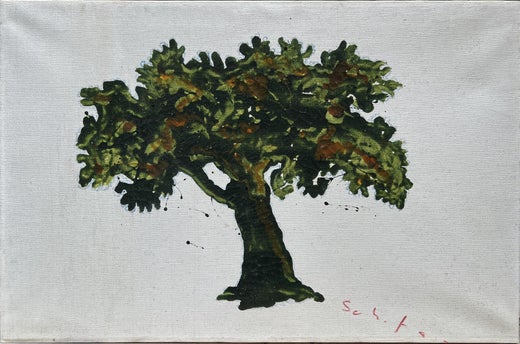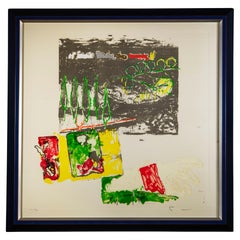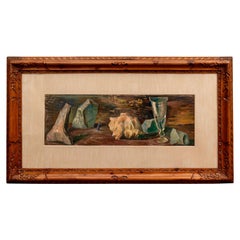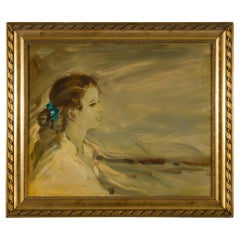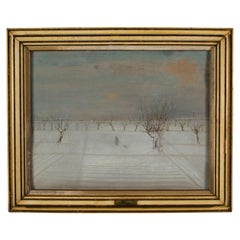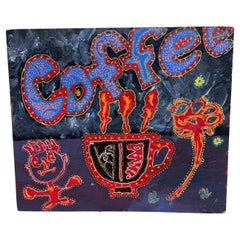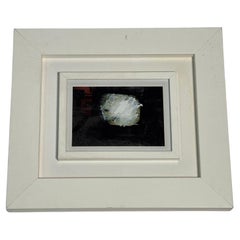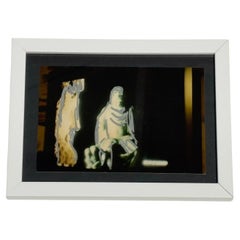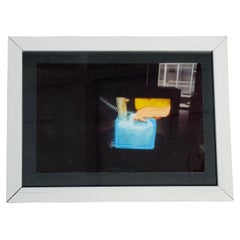Articles similaires à 1990s Signed Mario Schifano Artwork
Vous voulez plus d'images ou de vidéos ?
Demander au vendeur plus d'images ou de vidéos
1 sur 10
1990s Signed Mario Schifano Artwork
À propos de cet article
Enamel on canvas "Untitled" signature on the back.
Certification by the artist is present.
Archived in 1997 Monte Titano Arte
General Archive of Mario Schifano's paintings n. 713/97 dated 19.09.1997 Monte Titano Arte. Bibliography: the work is present in III° Mario Schifano Works on Canvas 1991-1998 page 401
The dimensions are without frame.
This painting, comes from a private collection and is beautified by an impressive original frame in natural wood, in almost perfect condition.
The painting is also protected by glass
Every item of our Gallery, upon request, is accompanied by a certificate of authenticity issued by Sabrina Egidi official Expert in Italian furniture for the Chamber of Commerce of Rome and for the Rome Civil Courts.
Mario Schifano (Homs 1934 - 1998) was an Italian painter and filmmaker.
Together with Franco Angeli and Tano Festa he represented a fundamental point of Italian and European Pop Art.
Perfectly integrated in the international cultural scene of the 1960s, he was reputed to be a prolific, exuberant and drug-addicted artist.
A keen student of new painting techniques, he was among the first to use computers to create works and was able to process images from the computer and transfer them onto emulsified canvases.
Mario Schifano was born in Italian Libya and after the end of the war returned to Rome where, due to his restless personality, he left school early to follow in his father's footsteps who worked at the Etruscan museum of Villa Giulia as an archaeologist and restorer.
Thanks to this experience, he approached art, initially producing works that were influenced by Informal Art.
His first solo exhibition was at the Galleria Appia Antica in Rome in 1959.
In the late 1950s, he participated in the artistic movement Scuola di Piazza del Popolo together with artists such as Francesco Lo Savio, Mimmo Rotella, Giuseppe Uncini, Giosetta Fioroni, Tano Festa and Franco Angeli.
The group met at Caffè Rosati, a Roman café then frequented by Pier Paolo Pasolini, Alberto Moravia and Federico Fellini, among others, and located in Piazza del Popolo, from which they took their name.
In 1960, the group's works were exhibited in a group show at Galleria La Salita.
In 1961 he exhibited in a solo show at Galleria La Tartarugadi Plinio De Martiis in Rome.
In the meantime, he had met, among others, his future lover Anita Pallenberg at the Caffè Rosati, with whom he made his first trip to New York in 1962, where he came into contact with Andy Warhol and Gerard Malanga at the Factory.
During this period he participated in the New Realists exhibition at the Sidney Janis Gallery, a group show that included most of the young artists of Pop art and Nouveau Réalisme, including Andy Warhol and Roy Lichtenstein.
He then had the opportunity to participate in the New York social scene, which led to his first experiments with LSD.[6]
On his return from New York, after participating in exhibitions in Rome, Paris and Milan, he took part in the XXXII International Art Exhibition in Venice in 1964.
During this period, his paintings defined as 'Anemic Landscapes', in which it is memory that evokes the representation of nature with small details or allusive inscriptions, and the reinterpretations of art history that later led to his famous pictorial works on futurism appear in embryo.
In Rome, he met and frequented Marco Ferreri and Giuseppe Ungaretti to whom, already in his 80s, he offered an evening at Peyote.
But one of the acquaintances of this period that most influenced him was that with Ettore Rosboch, with whom he formed a deep friendship, based on a shared passion for music. In those years, also thanks to their constant trips to London, the two became friends with the Rolling Stones, to whom they introduced Anita Pallenberg, who in 1965 began a relationship with Brian Jones, and years later became Keith Richards' partner.
In 1969, the flat in Piazza in Piscinula in Rome that then belonged to Schifano was used by Ferreri as the set for the film Dillinger is Dead, on the walls of which some of the artist's paintings can be seen.
In 1969, the Rolling Stones dedicated the song Monkey Man to Mario Schifano.
In 1971 some of his paintings were included by Achille Bonito Oliva in the exhibition Vitalità nel negativo nell'arte italiana 1960/70.
Many of his works, the so-called 'monochromes', present only one or two colours, applied on wrapping paper glued on canvas.
The influence of Jasper Johns was manifested in the use of numbers or isolated letters of the alphabet, but in Schifano's way of painting analogies can be traced to the work of Robert Rauschenberg.
In a painting from 1960, one can read the word 'no' painted with drips of colour in large capital letters, as in a wall graffiti.
The influence of Pop art can be seen in all the artistic production of Mario Schifano, who was fascinated by new technologies, advertising, music, photography and experimentation.
In particular, the artist's closest works to Pop Art are those of the 1980s.
Among the most important works of this period are the Propagande, a series dedicated to advertising brands (Coca-Cola and Esso) in which we have a clear example of the conveyance of commonly used and easily recognisable images quoted in multiple ways or details of them, bicycles, flowers and nature in general (among the most famous series are the Paesaggi anemici, Vedute interrotte, L'albero della vita, estinti and Campi di grano).
Among his most recognisable and important works are certainly the emulsion canvases, daughters of those continuous photographic shots that accompanied his entire life, supports on which television images of daily consumption are reproposed, multiple and in a continuous flow with light pictorial interventions.
- Créateur:Mario Schifano (Auteur)
- Dimensions:Hauteur : 30 cm (11,82 po)Largeur : 20 cm (7,88 po)Profondeur : 5 cm (1,97 po)
- Style:Mid-Century Modern (De la période)
- Matériaux et techniques:
- Lieu d'origine:
- Période:1990-1999
- Date de fabrication:1997
- État:Usure conforme à l'âge et à l'utilisation. Décoloration mineure.
- Adresse du vendeur:Roma, IT
- Numéro de référence:1stDibs : LU4827245226372
Mario Schifano
Mario Schifano (1934-1968) est considéré comme l'un des artistes les plus significatifs du postmodernisme italien. Tout au long de sa carrière, il a travaillé sur de nombreux supports, mais il est peut-être plus connu pour ses collages constitués de publicités, de vieux papiers et d'éléments peints. Au cours de la seconde moitié de sa carrière, l'œuvre de Schifano est devenue de plus en plus politique en explorant des questions telles que la guerre du Viêt Nam et l'agitation sociale généralisée, à la fois par le biais du cinéma et de la photographie. Né en 1934 en Libye, Schifano et sa famille se sont installés à Rome après la Seconde Guerre mondiale. Peu intéressé par une formation formelle, Schifano s'est mis à peindre de manière indépendante et a commencé à produire des œuvres mixtes, utilisant principalement des toiles monochromes avec du papier d'emballage collé et des pochoirs. Ces œuvres ont été saluées par la critique et ont donné lieu à un certain nombre d'expositions en Italie et aux États-Unis. En 1962, il fait partie de New Realists, une importante exposition collective à la Sidney Janis Gallery de New York, aux côtés d'artistes tels qu'Andy Warhol et Roy Lichtenstein. Utilisant souvent des éléments de la culture pop, tels que des logos de marques et des publicités, son œuvre est largement considérée dans le contexte du pop art. Bien que Schifano ait été constamment productif et acclamé par la critique, il a lutté contre la toxicomanie pendant la majeure partie de sa vie, une habitude qui s'est traduite par de multiples arrestations, ce qui a conduit l'artiste à qualifier sa carrière de maldoto - maudite. Il est mort à l'âge de 63 ans à Rome en 1998 (Ref : Sotheby's). Ses œuvres d'art ont été vendues pour plus d'un million d'euros chez Sotheby's.
À propos du vendeur
5,0
Vendeur Platine
Vendeurs premium dont la note est supérieure à 4,7 et le délai de réponse de 24 heures maximum
Établi en 2005
Vendeur 1stDibs depuis 2019
89 ventes sur 1stDibs
Temps de réponse habituel : 2 heures
- ExpéditionRecherche du devis...Expédition depuis : Rome, Italie
- Politique des retours
Certaines parties de cette page ont été traduites automatiquement. 1stDibs ne garantit pas l'exactitude des traductions. L'anglais est la langue par défaut de ce site web.
Garantie d'authenticité
Bien qu'il soit peu probable que la situation se présente, dans le cas où vous rencontreriez un problème d'authenticité d'un article, contactez-nous dans un délai d'un an pour obtenir un remboursement intégral. DétailsGarantie de remboursement
Si votre article n'est pas conforme à la description, est endommagé pendant le transport ou ne vous est pas livré, contactez-nous sous 7 jours pour obtenir un remboursement intégral. DétailsAnnulation sous 24 heures
Vous disposez d'un délai de 24 heures pour annuler votre achat sans motif.Des vendeurs professionnels agréés
Nos vendeurs de renommée mondiale doivent respecter des normes strictes en matière de service et de qualité, afin de préserver l'intégrité de nos fiches produit.Garantie d'alignement des prix
Si vous constatez qu'un autre vendeur a mis en vente le même article à un prix inférieur sur un autre site, nous nous alignerons sur ce prix.Livraison en toute confiance à l'international
Notre réseau de transporteurs de premier ordre propose des options d'expédition spécialisées dans le monde entier, y compris des livraisons personnalisées.Plus d'articles de ce vendeur
Tout afficherŒuvre sur papier signée Mario Schifano, années 1980
Par Mario Schifano
Sérigraphie Mater "Ondate di gelo" (Vagues de gel) de Mario Schifano.
Signature et numérotation au crayon au recto.
Cachet à sec de l'artiste au recto.
A.C.I.C. (Pas à vendre) 23/...
Catégorie
Vintage, années 1980, italien, Mid-Century Modern, Estampes
Matériaux
Toile, Verre, Bois
Nature morte italienne du milieu du siècle signée et archivée par Mario Tozzi
Par Mario Tozzi
Œuvre authentifiée de Mario Tozzi
Natura morta con figurina smarrita" (Nature morte avec figurine perdue), œuvre inédite sur le marché, signée Mario Tozzi en haut à droite.
Elle re...
Catégorie
Milieu du XXe siècle, italien, Mid-Century Modern, Peintures
Matériaux
Toile, Bois
Portrait italien des années 1940 encadré signé
Par Orazio Amato
Important, magnifique tableau signé par le célèbre artiste italien Orazio Amato.
Portrait d'une jeune femme avec paysage, huile sur toile signée
Cette œuvre d'art, inédite sur le m...
Catégorie
Vintage, années 1940, italien, Mid-Century Modern, Peintures
Matériaux
Toile, Bois
Peinture de paysage italienne signée d'époque
Par Demetrio Tabacco
Le grand historien de l'art Federico Zeri disait que peindre des paysages enneigés était l'une des choses les plus compliquées pour un artiste.
Eh bien, dans ce paysage de la campagn...
Catégorie
Milieu du XXe siècle, italien, Mid-Century Modern, Peintures
Matériaux
Toile, Bois
Signé italien des années 1960 Peinture abstraite
Par Nino Caffè
Nino Caffè, peinture sur papier, techniques mixtes.
"Vestizione di un pretino" (Vêtements d'un jeune prêtre)
Signé en bas au centre : Caffè.
Les jeunes prêtres de la Rome des anné...
Catégorie
Vintage, années 1960, italien, Mid-Century Modern, Peintures
Matériaux
Bois, Papier
Peinture française moderne signée Marine
Par Moya Dyring
Magnifique peinture à l'huile évocatrice de la grande artiste moderne de l'école française Moya Dyring, spécialisée dans les marinas.
Elle représente un port avec des bateaux probablement de la Côte d'Azur, peints avec une grande intensité mais donnant en même temps une douce impression de sérénité.
Moya Claire Dyring est née à Coburg, Victoria en 1909.
Elle a réalisé des dessins, des peintures à l'huile et des pastels.
Elle fut l'une des premières femmes artistes à embrasser le modernisme et à exposer des peintures cubistes à Melbourne.
Pendant plusieurs années, elle a été membre de la communauté d'art moderne connue sous le nom de "Heide Circle", du nom de la maison des collectionneurs d'art John et Sunday Reed, qui abrite aujourd'hui le Heide Museum of Modern Art.
Chaque article de notre Gallery est accompagné, sur demande, d'un certificat d'authenticité délivré par Sabrina Egidi, expert officiel en mobilier italien auprès de la Chambre de commerce de Rome et des tribunaux civils de Rome.
Dyring a ensuite voyagé aux États-Unis et en France, où elle a vécu la majeure partie de sa vie. Ses travaux sont conservés au musée Heldly ainsi qu'à la National Gallery of Australia.
L'une de ses premières œuvres de style cubiste, Melanctha, 1934, a été acquise par Sunday Reed.
En 1934, Dyring a également peint le Portrait de Sunday Reed, qui est entré dans la collection de Reed, ainsi qu'un Portrait de femme de style cubiste datant de la même année.
Alors que ses premières œuvres étaient figuratives ou cubistes, en France, elle s'est tournée vers le paysage au gré de ses voyages dans différentes villes de l'Hexagone.
À la fin de sa vie, incapable de voyager librement, elle peint des enfants sur fond de Paris.
Au fil du temps, elle a été largement passée sous silence et n'a pas été incluse dans les grandes expositions d'artistes, en particulier de femmes artistes, des années 30, 40 et 50.
En 2002, à l'université de Melbourne, Gaynor Patricia Cuthbert s'est penchée sur sa vie et son œuvre dans le cadre d'une thèse de doctorat, contribuant ainsi à ramener l'attention sur son travail.
Collectional
Le Heide Museum of Modern Art conserve de nombreuses peintures et dessins, dont certains ont été acquis grâce à la collection de John et Sydney Reed.
La National Gallery of Australia, Canberra comprend un dessin.
La Gallery Art (a) Gallery of New South Wales détient plusieurs œuvres.
Troisième enfant de Carl Peter Wilhelm Dyring, médecin, et de sa seconde épouse Dagmar Alexandra Esther, née Cohn, tous deux nés à Victoria. Moya a fait ses études (1917-27) à la Firbank Church's Girls' Grammar School, à Brighton.
Après avoir visité Paris en 1928, elle a étudié (1929-32) à la National Gallery schools, à Melbourne, et a partagé l'intérêt de son camarade Sam Atyeo pour l'innovation artistique.
Le modernisme classique a attiré son attention au début des années 1930.
Elle peint à l'école George Bell et étudie avec Rah Fizelle à Sydney ; Mary Alice Evatt et Cynthia Reed sont ses collègues.
Pendant plusieurs mois en 1937, elle s'est occupée de Heide, la maison et le jardin de John et Sunday Reed, à Bulleen, Melbourne.
Les Reed ont joué un rôle déterminant dans sa sympathie pour le modernisme et dans sa croyance en la camaraderie.
Elle entretient avec Sunday Reed des relations intenses que cette dernière entretiendra par la suite avec Joy Hester.
En juin, Dyring organise une exposition, inaugurée par H&H Gallery, à la Riddell Gallery de Melbourne.
Moins enthousiaste que les Reed et les IDEA à l'égard de son art, Basil Burdett parle de son "interprétation quelque peu incohérente des idées modernes", bien qu'il reconnaisse que son travail possède "l'audace de la couleur et un certain sens monumental de la forme [...] des qualités assez rares dans la peinture australienne...
Catégorie
Vintage, années 1950, Français, Mid-Century Modern, Peintures
Matériaux
Bois
Suggestions
Œuvre d'art des années 1990 Café chaud Peinture
AMBIANIC présente
Art of Vintage Painting Coffee Art
Pop Art amusant et fabuleux
acrylique sur carton
10.13 x 12 x .3/16
Vintage By
Se référer aux images
Catégorie
Fin du 20e siècle, Américain, Moderne, Peintures
Matériaux
Peinture
Photographie retouchée à la main par Mario Schifano
Par Mario Schifano
Sans titre technique mixte sur photographie de Mario Schifano réalisée en 1990-97.
Inscription au dos : signature "Schifano"
Avec certificat d'authenticité. Pièce unique.
Biographi...
Catégorie
années 1990, italien, Moderne, Photographies
Matériaux
Acrylique
Photographie retouchée à la main par Mario Schifano
Par Mario Schifano
Sans titre technique mixte sur photographie de Mario Schifano réalisée en 1990-97.
Inscription au dos : signature "Schifano"
Avec certificat d'authenticité.
Biographie
Au début des ...
Catégorie
années 1990, italien, Moderne, Photographies
Matériaux
Acrylique
Photographie retouchée à la main par Mario Schifano
Par Mario Schifano
Sans titre technique mixte sur photographie de Mario Schifano réalisée en 1990-97.
Inscription au dos : signature "Schifano"
Avec certificat d'authenticité. Pièce unique.
Biographi...
Catégorie
années 1990, italien, Moderne, Photographies
Matériaux
Acrylique
Photographie retouchée à la main par Mario Schifano
Par Mario Schifano
Sans titre technique mixte sur photographie de Mario Schifano réalisée en 1990-97.
Inscription au dos : signature "Schifano"
Avec certificat d'authenticité. Pièce unique.
Biographi...
Catégorie
années 1990, italien, Moderne, Photographies
Matériaux
Acrylique
Serigraphie Materic « Acerbi » de Mario Schifano avec cadre
Par Mario Schifano
Mario Schifano
"Acerbis
Année : 1990
Support : Sérigraphie Materic
Edition : 99/199
Dimensions du cadre : 110 x 80 x 5 cm
Signés et numérotés.
Catégorie
années 1990, italien, Moderne, Art contemporain
Matériaux
Bois, Papier
